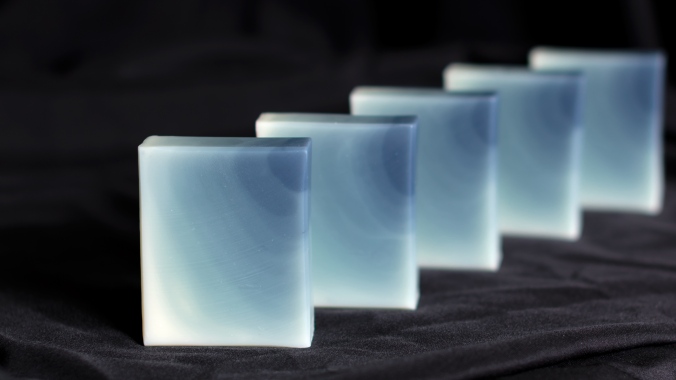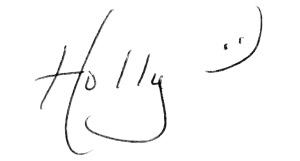 During the Ombre Great Cakes Soap Challenge, I made an extra batch and filmed the process. I created a really short video on how I made the soap. :)
During the Ombre Great Cakes Soap Challenge, I made an extra batch and filmed the process. I created a really short video on how I made the soap. :)
Note: If you’re a beginner or want to learn more about soap making, check out these helpful videos:
Soap Queen TV – LYE SAFETY: http://goo.gl/FqA0Yt
Amanda Aaron of Lovin’ Soap – BEGINNER SERIES: http://goo.gl/DjTzuE
**** RECIPE ****
Olive Oil – 42%
Coconut Oil – 25%
Shea Butter – 10%
Sunflower Oil – High Oleic – 10%
Cocoa Butter – 5%
Avocado Oil – 8%
Superfat – 6%
Lye & Water – use a soap calculator like the one at Majestic Mtn Sage (http://goo.gl/7hH5Vw)
I used a 31% lye solution (water = 2.2 x lye)
COLORS:
I used Amy Warden’s method of dissolving indigo in oil. You can read her blog post here – http://goo.gl/Z3qUAB
I mixed 1 teaspoon of indigo powder into 1 tablespoon of sunflower oil and allowed that to sit for a few hours (actually overnight).
Essential Oil Blend:
Rosemary – 2 parts
Peppermint – 1 part






Thanks so much for reading my post!

I could watch your videos all day! They are so calming and the soap is just so lovely. Thanks for sharing.
LikeLike
Thank you so much! :)
LikeLike
I second what Betty said! Thank you for the video and tutorial!
LikeLike
Thank you, Annie! And thank you so much for taking the time to leave a comment! :)
LikeLike
Such a lovely video, thanks for sharing! The soap is beautiful too 😊
LikeLike
Wow they look awesome. Love the clear cut video too. Nice and easy to follow. Can’t wait to see more.
LikeLike
This is an awesome video! Thanks :)
LikeLike
Hello. Thank you for sharing the recipe.
I made this today. I followed your video instructions except that I replaced 10% sunflower oil with 4%shea butter and 6%castor oil. I used extra virgin olive oil and I melted the hard oil in hot water bath.
Your soap mixture looks creamy beige, but mine was much browner when the tracing occurred.
I also mixed 1tsp indigo powder in 1tbs olive oil. Unfortunately, it didn’t change the color of the batter much, even though I had used a few more drop than the recipe each time.
Any idea what could have caused the problem? Thanks!
LikeLike
Hi Sarah. I think your recipe substitution of was completely fine, but perhaps it was the type of olive oil? Whenever I use extra virgin olive oil, my soap always looks a lot browner than when I use regular olive oil. I’ve even had one batch turn quite a dark brownish green. As far as the indigo goes, which brand do you use? I use the Botanical Colors indigo, and it is incredibly dark, so I don’t have to use much at all. I need to do a test using some other brands and post my results. I’m sorry you had some issues! I hope you have better luck next time. :)
LikeLike
Holly, thank you so much for your quick response!
So I’ve wrapped my wood mould in towels and let sit for overnight. After 12 hours, my soap was already as firm as the shea butter in room temp. And it has a light olive green color with no visible shade of blue.
I used the Bertolli EVOO, which does have a relatively deep color. I was surprised to find out that there are different types of Indigo powder. The one I bought from Amazon is green (Zenia Indigo Powder for hair). Did I use the wrong dye?
Also, how long did your batch gel and saponify before you unmould it? And how long do you recommend to cure this soap?
This is my very first batch of soap. So I don’t expect it to be perfect lol. But I can’t wait to try again with the correct ingredients to achieve that beautiful layered blue.
LikeLike
There are two types of indigo – green and blue. The blue is what I used in my video. I have used the green before but ended up liking green clay better. I got my blue indigo from BotanicalColors.com, but BrambleBerry and Nurture Soap also sell it. My soap gels within a few hours, but I usually leave it covered for 24 to 48 hours to avoid getting ash on top. Since this was your first batch (and a somewhat advanced technique), I would be sure to check the bars with a pH strip (2-14 pH range). I actually still do that to this day. This isn’t a terribly difficult technique, but I would recommend trying some simple soaps just to learn about trace, etc. Good luck with your soap making!
LikeLike
Pingback: Soaps – FagensDen.